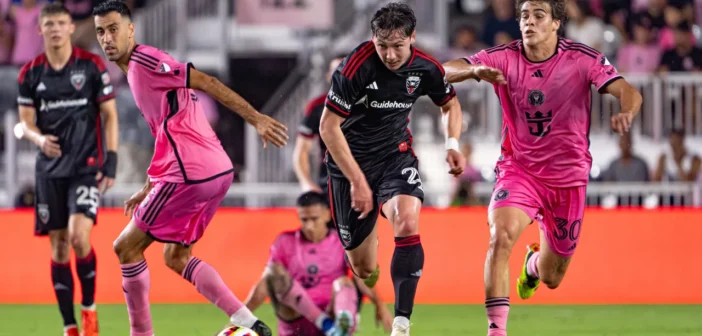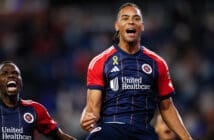The strong performances of two of DC United’s homegrown players for the US Men’s Olympic Team illustrates the value of identifying and developing young players. The process has been around in Europe for many years and only recently in the US.
Kevin Paredes from South Riding, Virginia, a DC suburb and Griffin Yow, from closer in Clifton, Virginia both came through United’s Academy and played for the MLS team before signing overseas. They were preceded some years earlier by Andy Najar from Franconia, Virginia.
Paredes impressed during significant action for the senior team while Yow saw less playing time but was dynamic when on the field. Clearly, they both were aided in development by their experiences. Najar, who came through earlier was more of a complete project and owned the right side for several years.
Today, the DC United roster features four “homegrown” players who are used in important roles while Coach Troy Lesesne makes a conscious effort to develop them. In particular, he has occasionally sent Matai Akinmboni, from Annapolis, Maryland, to play for Loudoun United, DC’s USL side, while also starting him in wide and central defensive positions during difficult periods of squad injuries. He was at pains to explain that the trips back and forth were deliberately designed to develop the youngster.
Ted Ku-DiPietro, from Oakton, Virginia, has been a frequent starter in both forward and wide midfield roles. In a recent game, he stepped into a central box to box midfield role, as the usual incumbent, Matti Peltola was needed to cover the depleted defense.
He explained why this expansion of responsibility was enjoyable, “Honestly, I think 8 is probably my best position as a midfielder, but you know, I like to come inside more and more. I think it helps with the system we play. I think the one with an extra number in the midfield sometimes that helps us with second balls, and you know when we play through the middle it opens up crosses into Christian.”
He is learning from the experience and trust, referring to working inside with Mateusz Klich, “I mean, yeah, of course he makes my job easier and I try to make his job easier. Obviously (he’s) a veteran and a very experienced player, so I try to learn as much from him as possible.“
Also featured in midfield is Jackson Hopkins from Fredericksburg, a few miles south of DC. He had a rare chance to play forward recently when Kristian Fletcher, another young homegrown, went down injured.
He explained the value at length, “Yeah, I think I wasn’t supposed to play until Fletcher got hurt, but I think being able to play in different positions is huge in my development. It helps you understand different parts of the field. – – – I know what the midfielders want so I think it’s good to have that variety.”
Lesesne has relied on his young players quite often, sometimes out of necessity, but also as starters with good impact. His moving Akinmboni around illustrates his recognition of the value of player development as does the variety of roles he entrusts to DiPietro and Hopkins.
This stands in contrast to the lack of local development of the much-heralded Freddy Adu from Potomac, Maryland. The youngster came through a less sophisticated system where he was too often the player who was sent the ball and expected to do it almost alone.
During his years with the senior team, he had excellent vison when he had the ball and real style with it but seemed to wonder what to do when not directly occupied. Had he been positionally moved about during his development, he might have developed a more total vision. As it was, European clubs expect to receive better prepared youngsters, and his time overseas was disappointing.
Some of that was due to his size which required that he learn to ride tackles. While he did explain in an interview that he had learned to “hit the other guy first” from Jaime Moreno, his answer was to gain 10 pounds over one winter in hopes of being more powerful, helpful but not the best answer.
The entire MLS has focused on homegrown players and United’s experience reflects that emphasis. Lesesne’s use of his youngsters during the remainder of this season will provide a good short-term test of his vision, but the ultimate test is likely to come in the next several years.
![Prost International [PINT]](https://prostinternational.com/wp-content/uploads/2021/08/PINTtFontLogoRoboto1536x78.jpg)



